

Meet the highest demands in image quality with our LM adapter solutions, state-of-the-art camera technology and the Leica DM4500 laboratory microscope
Launched in 2004, the Leica DM4500 is an upright infinity-corrected microscope. Combined with our LM digital adapters and modern digital cameras, it is ideally suited for photomicrography applications.
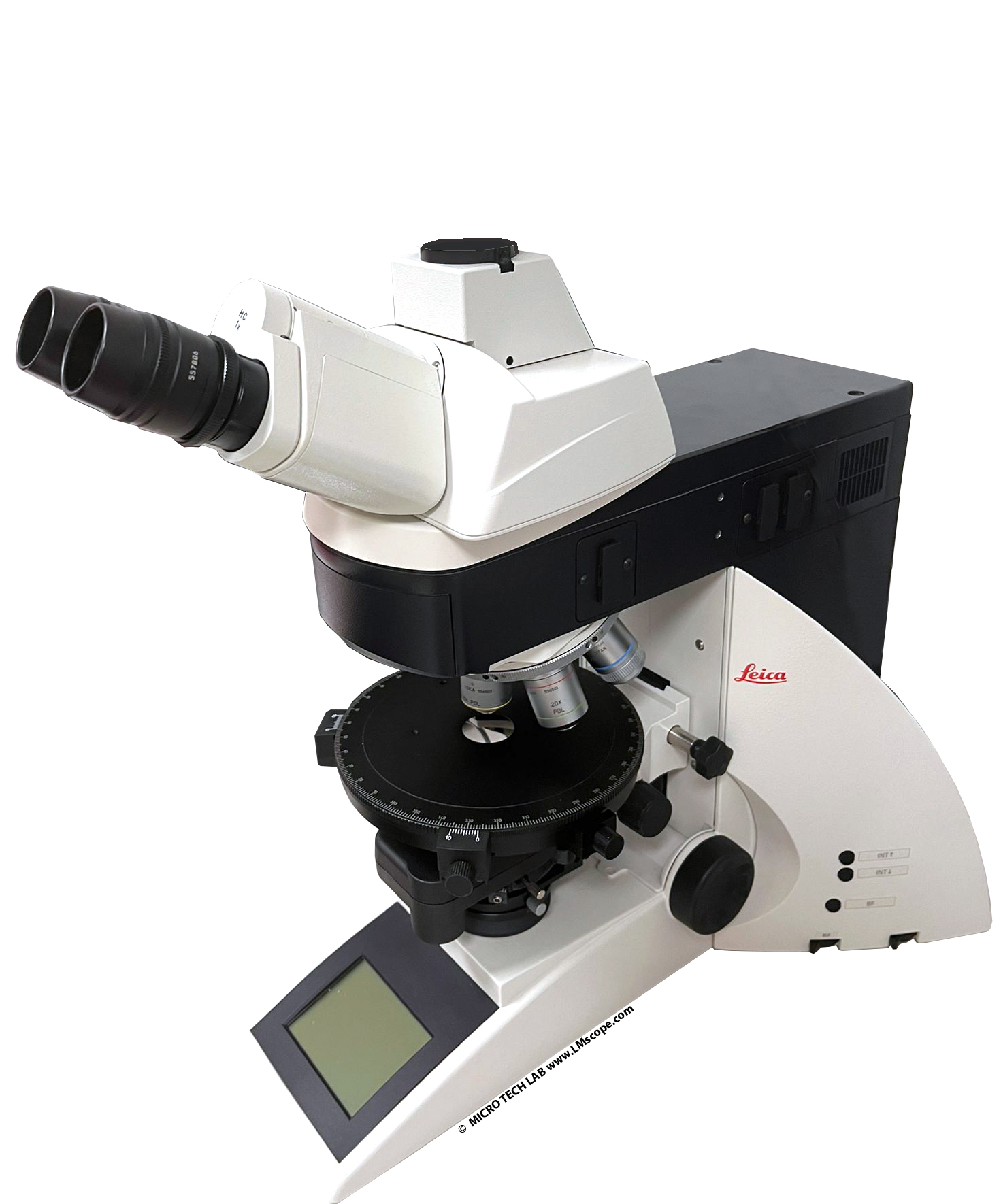
The microscope is available in the following versions: DM4500P, DM4500P LED, DM4500M and DM4500B. The letter B refers to routine and research applications in the field of biology (physiology, pathology, monitoring of therapeutic measures, etc.). Microscopes labelled with the letters M or P are intended for applications in material science, geoscience or mineralogy.
The Leica DM4500 offers a variety of observation methods. Like the DM4000B, it is a transmitted light microscope, but can also be equipped with a reflected light unit. The following techniques are supported: brightfield, darkfield, phase contrast and polarisation contrast (all fully automated). In addition, the DM4500 offers interference contrast (partially automated).
The 6x or 7x objective turret can be centred and is absolute coded. It offers space for the following types of Leica’s high-quality objectives: Plan POL, N Plan POL, PL Fluotar POL as well as immersion objectives. The usable field of view is 25 mm. The objectives can be moved to a central imaging position and have an M25 screw connection. A 1.25x “panoramic” objective is also available, which provides an extra-large field of view and excellent field depth for low magnification imaging. The rotatable stage offers exceptional flexibility.
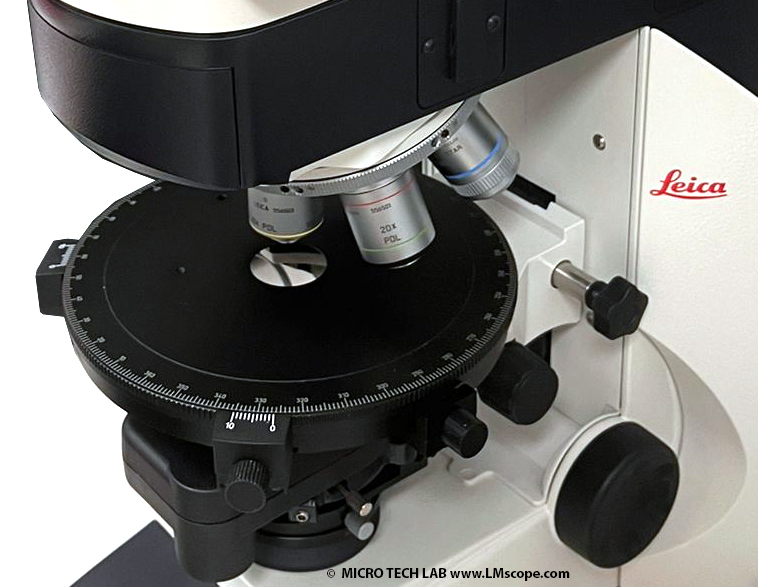
The microscope is manually adjustable (Z drive and XY drive). However, some parts of the DM4500 are motorised: the method of changing contrasting techniques, the aperture and field diaphragms, the motorised shutter and the 4x filter turret. The microscope also has an automatic colour-neutral brightness control and an exposure manager that automatically sets the light intensity to the light gathering power of the objective.
The display at the base of the microscope is also a convenient feature. It shows and automatically saves all settings of the microscope, so that they can be reproduced whenever needed. The display indicates the contrasting method, magnification, light intensity and the values for the field and aperture diaphragms. Where applicable, the light distribution between eyepiece and phototube is indicated.
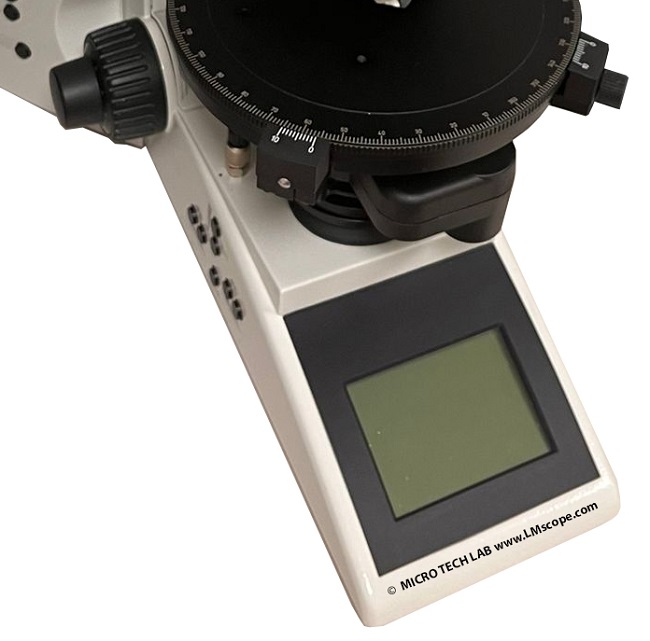
The modular design of the Leica DM4000/4500, DM5000 and DM6000 microscopes allows for a choice among several viewing tubes. Options include a fixed basic binocular tube (30 mm internal diameter), an adjustable ergo binocular tube and trinocular tubes. These have an internal diameter of 35 mm and are the basis for our LM adapter solutions with integrated precision optics.
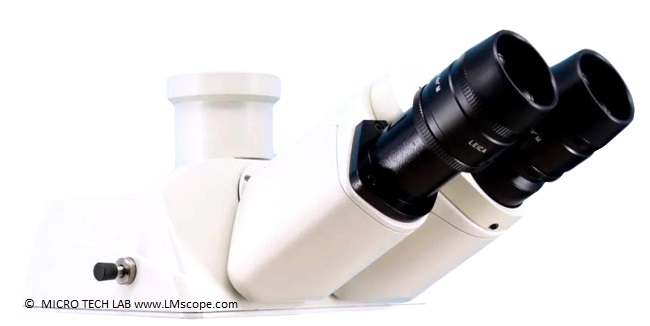
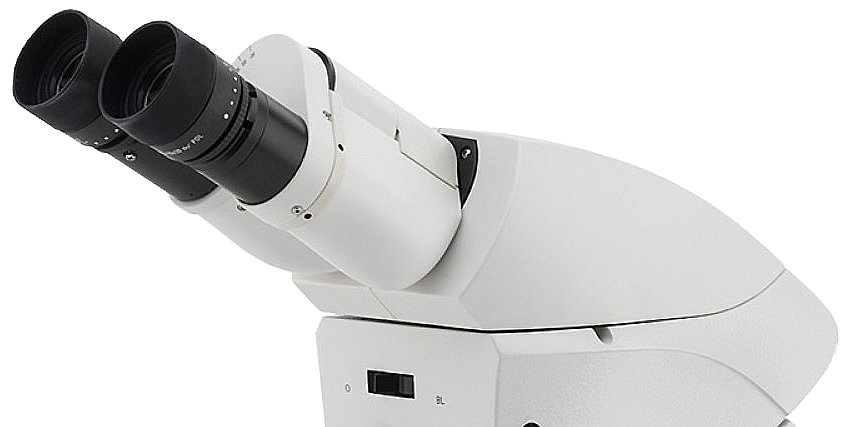
Leica trinocular tube version / Leica binocular tube
Leica offers various C-mount cameras for the microscope, such as the DC180, DFC280, D(F)C300, DFC320, D(F)C350, DFC450, D(F)C480 or DMC4500. These are usually attached to the microscope using the designated C-mount connection with reduction optics (0.5x, 0.63x).
Our LM microscope adapters, incorporating built-in precision optics, enable an extensive range of digital cameras, such as conventional DSLR cameras, mirrorless system cameras and hybrid cameras, C-mount microscope cameras, C-mount industrial cameras or high-speed cameras, to be attached to the microscope. LM microscope adapters are quality products, developed and manufactured in Austria. The adapter solution is equipped with an integrated optical system for optimising the field of view, which facilitates the best possible image quality.
If the microscope has a trinocular head, the camera is attached to the phototube. With this straightforward and stable connection method, high-quality images can be captured in no time at all.
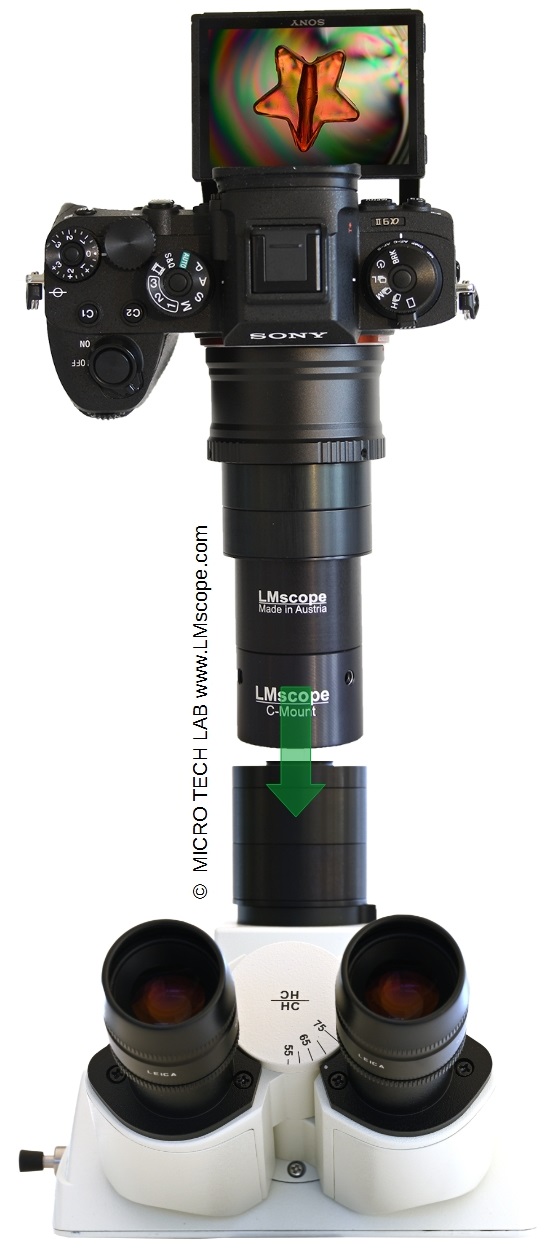
As an alternative to using the phototube, the camera can also be attached to the eyepiece tube of the microscope. To attach the camera, one eyepiece is removed and the camera-adapter combination is put into its place. Because the microscope adapter features a sturdy, mechanically robust design, it is capable of bearing the weight of heavy cameras with ease. This adapter version also delivers very good image results and offers great flexibility because it can be used on many different microscopes.
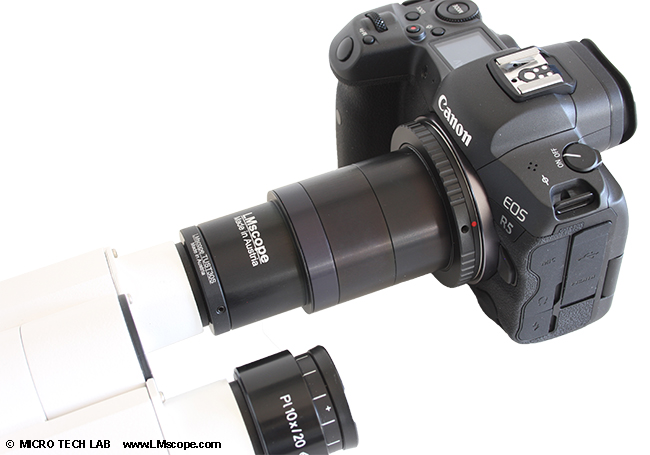
For more information on making a camera selection, please refer to the page with our current camera recommendations. We are also happy to provide personalised advice, so please do not hesitate to contact us.
Conclusion: Leica’s DM4500 is a versatile, high-quality microscope for a broad range of science and research imaging applications. The microscope’s superior optics, combined with our LM adapter solutions and the powerful features of modern cameras, deliver excellent image quality.
02.08.2023Photography:
Fitting the microscope to digital single-lens reflex (DSLR), mirrorless interchangeable-lens cameras (MILC ), digital single-lens mirrorless (DSLM) or C-mount cameras is easy with our LM digital SLR adapters, which feature a plan achromatic optical system. Our products make it possible to capture top-quality microscope images. To help you select the adapter that is right for your camera, we have set up an online configurator on our website. You can also email us – ideally with attached photographs of your microscope.
Modern DSLR and single-lens mirrorless (DSLM) offer the latest technology and are generally very well suited for microscopy applications. Most of them can be controlled remotely via PC/Mac. Because of their high sales volumes, they offer an excellent price/performance ratio compared to special-purpose microscope cameras.
Features of top DSLR and single-lens mirrorless cameras (DSLM):
- Large, powerful full-frame sensors (36 x 24 mm)
- Sensor resolution of 61 megapixels or 240 megapixels with Pixel Shift technology
- High light sensitivity (ISO 400,000+)
- Extensive dynamic range (up to 15 aperture stops/f-stops)
- Short exposure times (1/8000 second) up to 1/32,000 seconds using the digital shutter
- 4K Ultra HD or 8K Ultra HD video function
- Live video capture on external monitors in ultra HD quality
In most cases, these cameras are significantly more powerful than microscope cameras with smaller sensors (1/2" or 2/3"). On our website you will find our current camera recommendations and a camera ranking which is specifically tailored to microscopy applications.